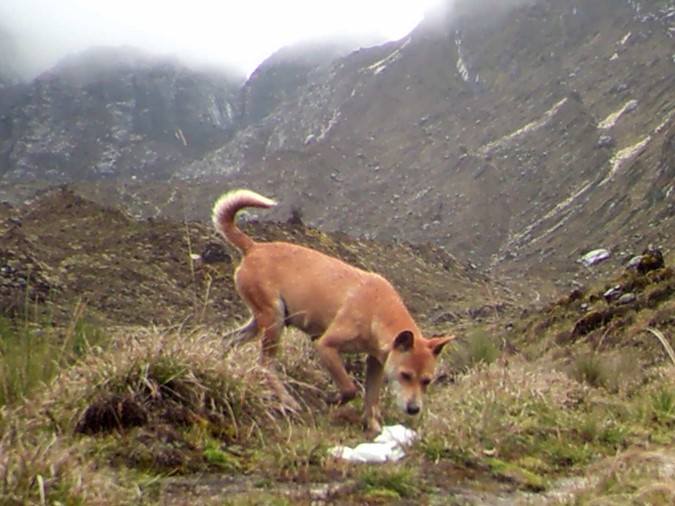
- Sustainable Planet -
- 3mins -
- 456 views
‘Extinct’ mountain dogs rediscovered in the wild
A beautiful breed of dog, unseen in the wild for more than 50 years and presumed extinct, has been photographed alive and well in New Guinea – with puppies!
The New Guinea Highland wild dog was thought to be extinct
An ancient breed of wild dog, thought to have been extinct for 50 years, has been confirmed as thriving in a remote high altitude area of the island of New Guinea, new images have shown.
The breed is believed to be related to the Australian dingo
“The discovery and confirmation of the Highland Wild Dog for the first time in over half a century is not only exciting but an incredible opportunity for science,” says the New Guinea Highland Wild Dog Foundation. Until this recent discovery, there were only known to be about 200 of the animals living in captivity. The breed, believed to be related to the Australian dingo, was last seen in the wild 50 years ago. It was feared the dog had become extinct in its native habitat along New Guinea’s remote central mountain spine, but the foundation now has fecal samples for DNA analysis and images of the dogs photographed during an expedition in 2016.

The dog is the largest and only apex predator on the whole of New Guinea
In September 2016, scientists from the University of Papua, with logistical support from mining company PT Freeport Indonesia and in collaboration with the Southwest Pacific Research Foundation, found and documented a healthy population of Highland Wild Dogs in Papua, an Indonesia Province on the western side of the island of New Guinea.
The team took more than 100 photographs of at least 15 individuals, including males, females, and females with pups ranging in age from 3 to 5 months, living in isolated locations between 3700 metres and 4600 metres above sea level.
The foundation says the dog is the largest and only apex predator on the whole of New Guinea.
Research is ongoing, but scientists are optimistic about the Highland Wild Dogs’ continuing survival.
You can read more about the expedition and discovery, along with photos, by clicking here.

In addition to scavenged food it is thought the dogs have a varied diet
- Dingiso, (Dendrolagus mbaiso)
- Silky, (Phalanger sericeus)
- Ground, (Phalanger gymnotis)
- Mountain, (Phalanger carmelitae)
- Coppery, (Pseudochirops cupreus)
- Pygmy, (Pseudochirops mayeri)
- Glacier Rat, (Stenomys richardsoni)
- Arianus’s Rat, (Stenomys omlichodes)
- Moss Forest Rat, (Stenomys niobe)
- Black Rat (Rattus rattus)

